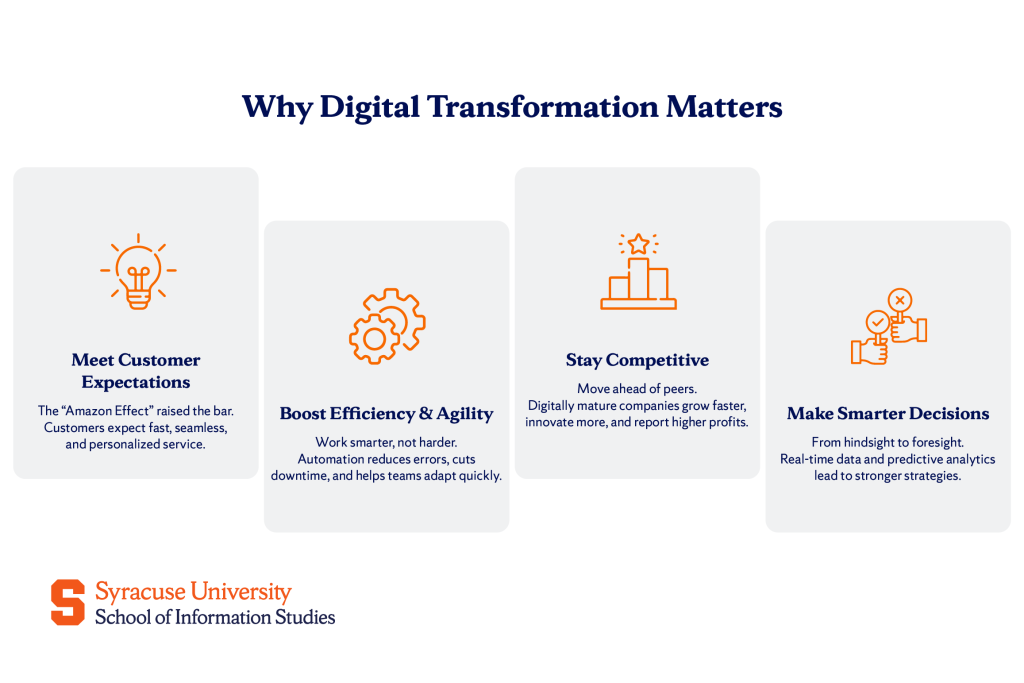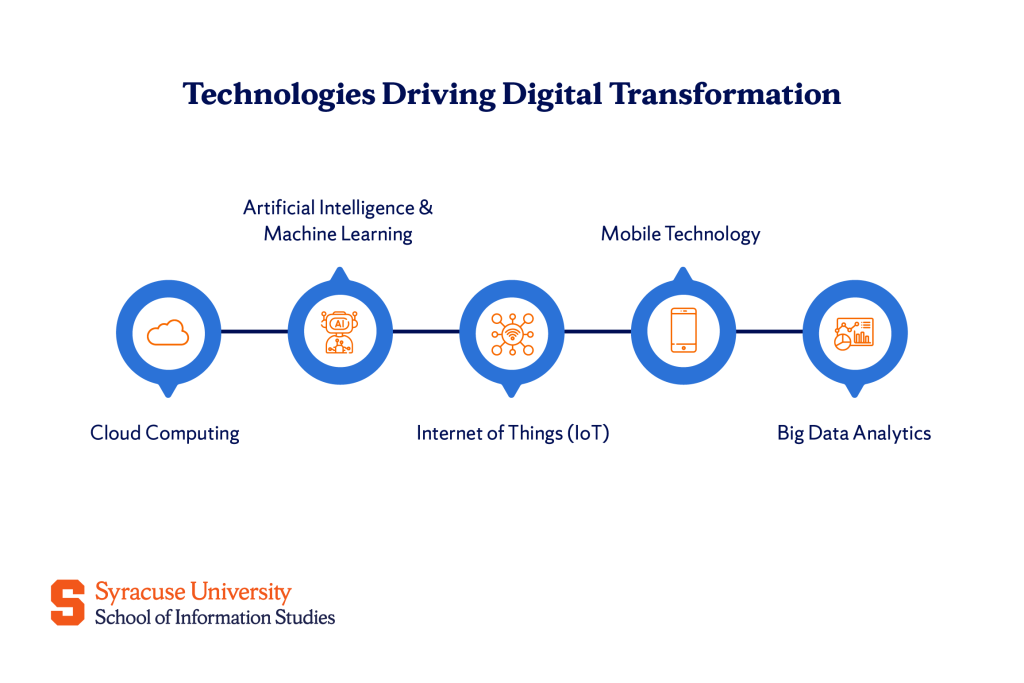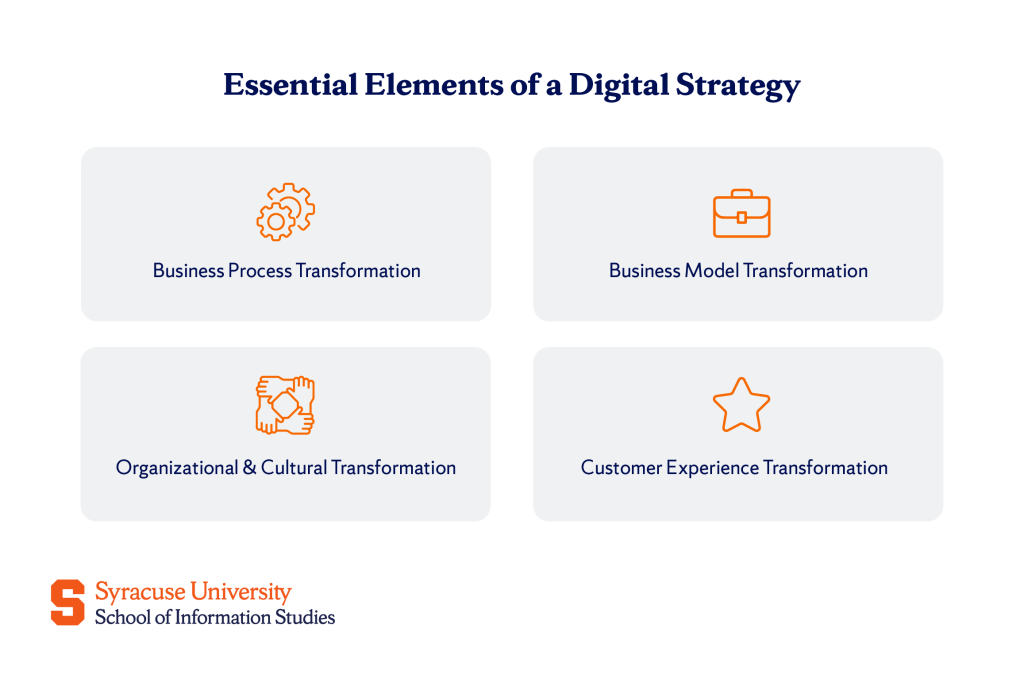Key Takeaways
- 73% of customers expect companies to understand their unique needs, and 66% will switch to competitors after one poor experience.
- Digitally mature companies generate 9% more revenue from their physical assets and report higher profit margins than industry peers.
- Key technologies driving digital transformation include cloud computing, artificial intelligence and machine learning, IoT, mobile technology, and big data analytics.
A 2024 McKinsey study found that companies that succeed with digital transformation grow their revenue 45% faster than others in their industry. But most efforts (about 70%) fail. The reason isn’t usually the technology. It’s the difficulty of aligning people, processes, and company culture with new digital tools.
Customer expectations are no longer set by competitors in your industry. They’re shaped by the best digital experience customers have anywhere, whether that’s one-click ordering on Amazon or personalized recommendations on Netflix. If your business can’t meet these expectations, it risks falling behind.
This guide explains what digital transformation is, why it matters, and how successful companies implement it.
What Is Digital Transformation
Digital transformation is like a complete architectural renovation for the digital age. It means rethinking how your business works from the ground up, using technology to better serve modern customers.
Digital transformation is the strategic integration of digital technology into all areas of a business, changing how it operates and delivers value.
Understanding key distinctions
Many people mix up these three similar terms, but they’re not the same:
- Digitization is converting analog content into digital form, like scanning paper files into PDFs or turning vinyl into MP3s.
- Digitalization means using digital tools to improve existing processes; moving from paper invoicing to electronic systems or replacing in-person meetings with video conferences.
- Digital transformation goes further, rethinking business strategy and operations using digital capabilities. Examples include Netflix transforming from DVD rentals to streaming or banks becoming digital-first platforms.
It’s a cultural change, not just a technological one
Technology is only part of the equation. Real success comes from building a company culture that supports:
- Agility: Moving from rigid annual planning to continuous adaptation based on market changes and customer needs.
- Data-driven decision-making: Using real-time dashboards, predictive analytics, and A/B testing instead of relying solely on experience and intuition.
- Collaboration: Breaking down departmental silos so IT, marketing, operations, and customer service work toward common goals.
- Experimentation: Trying new ideas and learning from them. Companies that do this well are 2.5x more likely to succeed, according to Harvard Business Review.
Why Digital Transformation Is Important for Business
Digital transformation has become essential for business survival and growth. It helps leaders meet customer expectations, improve efficiency, stay competitive, and make smarter decisions.

Meeting evolving customer expectations
The “Amazon Effect” (the shift toward expecting fast, seamless, and personalized service) has changed customer expectations across all industries. A Salesforce study found 73% of customers expect companies to understand their unique needs, and 66% will switch to competitors after one poor experience.
Digital transformation enables personalized, seamless service through unified data platforms, omnichannel communication, and AI-powered personalization.
Improving operational efficiency and agility
Automation removes error-prone manual tasks, like data entry and inventory tracking, so employees can focus on higher-value work. McKinsey reports that manufacturers using IoT and predictive analytics cut unplanned downtime by half and reduced maintenance costs by 40%.
Agility is equally critical: during COVID-19, digitally mature companies moved to remote work and online sales within days, while others took months to catch up.
Gaining a competitive advantage
Digital transformation creates measurable competitive advantages in speed, innovation, and market responsiveness. Research from the MIT Initiative on the Digital Economy found that digitally mature companies generate 9% more revenue from their physical assets and report higher profit margins than industry peers.
The advantage comes from bringing products to market faster, responding to customer feedback in real-time, and scaling operations without proportional cost increases.
Enabling data-driven decision-making
Transformed organizations use real-time dashboards and predictive analytics instead of historical reports. Research shows data-driven companies are 23 times more likely to acquire customers and 19 times as likely to be profitable.
The Key Technologies Driving Digital Transformation
These technologies are the essential power tools in your transformation toolkit. While you don’t need to be an expert engineer, you do need to know what each tool does and when to use it.
Cloud computing
Cloud computing serves as the flexible foundation for digital transformation. Rather than owning and maintaining physical servers and data centers, companies access computing resources, storage, and applications through the internet on a pay-as-you-go basis.
The benefits are substantial: scalability means you pay only for what you use and can instantly expand capacity during peak periods. Accessibility allows employees to work from anywhere with an internet connection. Speed of deployment means new applications can be launched in hours or days rather than months.
Artificial intelligence and machine learning
AI and machine learning serve as the engine for automation and insight generation. These technologies enable computers to learn from data, identify patterns, and make predictions or decisions without explicit programming for every scenario.
There are various types of AI with benefits that extend far beyond automation to include improved decision-making, personalized experiences, and entirely new business capabilities.

Internet of Things (IoT)
IoT creates the bridge between physical and digital worlds by connecting everyday devices to the internet, enabling them to collect and exchange data. Sensors embedded in equipment, vehicles, buildings, and products generate real-time information about performance, condition, and usage.
In manufacturing, IoT enables predictive maintenance: sensors on production equipment monitor vibration, temperature, and other indicators to predict when a machine needs servicing before it breaks down. This prevents costly unplanned downtime and extends equipment life.
Mobile technology
Mobile has become the primary interface for digital services. For customers, mobile apps provide personalized, location-aware services available 24/7. For employees, mobile devices enable field service, remote collaboration, and access to enterprise systems from any location.
According to Statista, there are over 6.8 billion smartphone users worldwide, equating to 85% of the global population. Companies that don’t deliver excellent mobile experiences are essentially invisible to this massive audience.
Big data analytics
Big data analytics serves as the compass that makes sense of all the information generated by these other technologies. It focuses on collecting, processing, and analyzing both structured and unstructured data to uncover insights that drive smarter business decisions.
Big data encompasses not just the massive volume of information but also the velocity at which it’s generated and the variety of data types; from transaction records to social media posts to sensor readings. Enterprise Resource Planning systems integrate these analytics capabilities across business functions to provide unified intelligence for decision-making.
Core Pillars of a Digital Transformation Strategy
A successful transformation needs a blueprint. These four pillars represent the essential areas a plan must cover to ensure the structure is sound and serves its purpose.
Business process transformation
This focuses on improving internal operations through automation, integration, and data analytics. This involves examining each step in key processes, identifying bottlenecks and inefficiencies, and redesigning them using automation, integration, and data analytics.
For example, digital employee onboarding uses a portal where new hires complete documentation electronically, data automatically populates into systems, and training happens online, coordinated through workflow automation.
Business model transformation
This alters how companies create and capture value. Adobe shifted from selling boxed software to cloud-based subscriptions (Creative Cloud), changing product development, customer relationships, and revenue predictability. Rolls-Royce transformed from selling aircraft engines to selling “power by the hour”: customers pay for usage while Rolls-Royce retains ownership and maintenance responsibility.

Organizational and cultural transformation
This addresses structure, leadership, and culture. It means breaking down silos, empowering teams for quick decisions, and rewarding collaboration.
Marketing, IT, operations, and customer service must work as integrated teams rather than separate kingdoms. It requires empowering teams to make decisions quickly rather than routing everything through hierarchical approval chains.
Customer experience transformation
This involves mapping the customer journey and using technology to remove friction at every touchpoint. This might include implementing chatbots for instant 24/7 support, creating mobile apps that let customers track orders in real-time, using AI to personalize product recommendations, or building self-service portals that solve common problems without requiring phone calls.
Common Challenges and How to Overcome Them
Even the best-planned digital transformations run into obstacles. However, most challenges are predictable, and there are proven ways to manage them.
Resistance to change
Employees often push back when new systems disrupt routines or feel like a threat to job security. Left unchecked, this resistance can stall transformation.
Solution: Communicate the why behind the change early and often; not just what’s changing, but how it benefits customers, the business, and employees themselves. Offer training that builds confidence with new tools. Involve employees in the process through cross-functional teams so they feel ownership and can champion the changes.
Lack of a clear strategy
Without a strategy that ties technology investments to business goals, efforts become fragmented and costly.
Solution: Build a roadmap that starts with business objectives. Define what problems you’re solving or what new opportunities you’re targeting. Set measurable KPIs tied to outcomes, like faster product launches, higher customer satisfaction, or lower costs. Appoint executive sponsors with authority to clear roadblocks and keep momentum.
Outdated legacy systems
Older systems can’t easily integrate with modern tools, slowing progress and creating technical debt.
Solution: Use a “two-speed IT” model: launch new customer-facing apps on modern platforms while gradually upgrading or integrating legacy systems with APIs. Prioritize replacements that deliver the biggest customer or operational impact first, instead of trying to swap everything at once.
Data security concerns
Digital transformation increases attack surfaces and potential vulnerabilities as organizations connect more systems, collect more data, and enable more access points.
Solution: Make security part of the plan from day one. Involve security experts in planning, conduct assessments at each stage, and adopt zero-trust models where every user and device is verified. Train employees regularly, since they are the first line of defense.
Shortage of in-house skills
Many organizations lack the technical expertise needed to implement and manage new digital technologies.
Solution: Take a dual approach: upskill current employees through training and partnerships with universities or online platforms, while also bringing in external specialists for immediate needs. Hybrid talent models, where external experts work alongside internal teams, help transfer knowledge and build lasting capability.
The Bottom Line
Digital transformation is a fundamental reimagining of how organizations create value in a digital world. Success depends on aligning technology with business goals, building a culture that embraces change, and keeping customer needs at the center.
True transformation takes long-term commitment, continuous learning, and adaptability. Organizations that treat it as a strategic priority, reworking processes, business models, culture, and customer experience together, become more resilient and better prepared for the future.
A practical way to begin is by focusing on one high-impact area. Ask: Where do customers feel friction? Which processes slow us down? Start there with a clear strategy and the right digital capabilities, then expand your efforts step by step.
For those who want to develop the skills behind digital transformation, Syracuse University’s Information Management and Technology Bachelor’s Degree offers training in systems design, management, and analytics, preparing graduates for the roles employers value most.
Frequently Asked Questions (FAQs)
How is digital transformation different from just using more technology?
Adding tools is not a transformation. True transformation changes how a business works, reimagining workflows, breaking down silos, and even creating new models. For example, a retailer doesn’t just build an online store; they integrate channels, use data for personalization, and redesign customer interactions.
Is digitalization the same as digital transformation?
No. Digitalization makes existing processes more efficient, like switching from paper invoices to electronic ones. Transformation is broader, reshaping strategy, operations, and culture. Digitalization improves the model; transformation can redefine it.
What is the single best skill to learn for a career in this field?
Data literacy. You don’t need to be a data scientist, but you must be able to interpret dashboards, spot patterns, and make data-informed decisions. Combined with strong communication skills, this makes you valuable across strategy and implementation.
